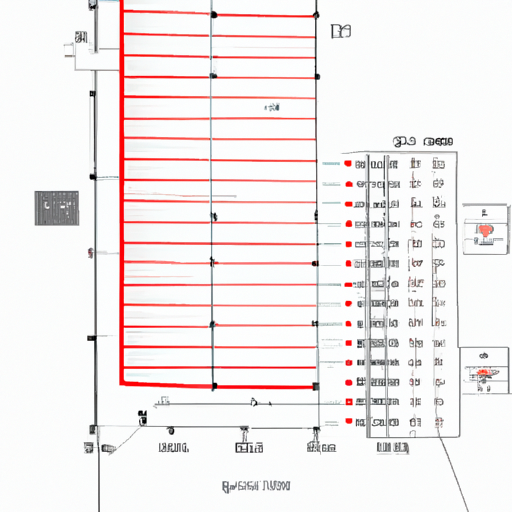When it comes to choosing the spot pointing configuration for an optional oscillator, there are several factors to consider in order to ensure optimal performance and functionality. In this article, we will discuss the importance of spot pointing, the different configurations available, and how to choose the best option for your specific needs.
Spot pointing is a critical aspect of oscillator design, as it determines the accuracy and stability of the oscillator's output signal. The spot pointing configuration refers to the method used to control the frequency and phase of the oscillator's output signal. There are several different spot pointing configurations available, each with its own advantages and disadvantages.
One common spot pointing configuration is the phase-locked loop (PLL) method. In this configuration, a feedback loop is used to compare the output signal of the oscillator to a reference signal, and adjust the oscillator's frequency and phase accordingly. This method is highly accurate and stable, making it ideal for applications where precise timing is essential.
Another spot pointing configuration is the frequency-locked loop (FLL) method. In this configuration, the oscillator's frequency is adjusted based on the difference between the output signal and a reference signal. While not as accurate as the PLL method, the FLL method is simpler and more cost-effective, making it a good choice for less demanding applications.
In addition to these traditional spot pointing configurations, there are also newer technologies available that offer even greater precision and stability. For example, some oscillators now feature digital spot pointing capabilities, which use digital signal processing techniques to fine-tune the oscillator's output signal. This can result in even higher levels of accuracy and stability, making digital spot pointing an attractive option for high-performance applications.
When choosing a spot pointing configuration for an optional oscillator, it is important to consider the specific requirements of your application. Factors such as the desired level of accuracy, stability, and cost will all play a role in determining the best configuration for your needs. Additionally, it is important to consider the complexity of the configuration and the resources available for implementation.
In general, if precision timing is essential for your application, a PLL-based spot pointing configuration may be the best choice. However, if cost is a primary concern, a simpler FLL-based configuration may be sufficient. For applications that require the highest levels of accuracy and stability, digital spot pointing technologies may be worth considering.
Ultimately, the best spot pointing configuration for an optional oscillator will depend on a variety of factors, including the specific requirements of your application, your budget, and the resources available for implementation. By carefully considering these factors and weighing the advantages and disadvantages of each configuration, you can choose the spot pointing method that will provide the best performance for your needs.
When it comes to choosing the spot pointing configuration for an optional oscillator, there are several factors to consider in order to ensure optimal performance and functionality. In this article, we will discuss the importance of spot pointing, the different configurations available, and how to choose the best option for your specific needs.
Spot pointing is a critical aspect of oscillator design, as it determines the accuracy and stability of the oscillator's output signal. The spot pointing configuration refers to the method used to control the frequency and phase of the oscillator's output signal. There are several different spot pointing configurations available, each with its own advantages and disadvantages.
One common spot pointing configuration is the phase-locked loop (PLL) method. In this configuration, a feedback loop is used to compare the output signal of the oscillator to a reference signal, and adjust the oscillator's frequency and phase accordingly. This method is highly accurate and stable, making it ideal for applications where precise timing is essential.
Another spot pointing configuration is the frequency-locked loop (FLL) method. In this configuration, the oscillator's frequency is adjusted based on the difference between the output signal and a reference signal. While not as accurate as the PLL method, the FLL method is simpler and more cost-effective, making it a good choice for less demanding applications.
In addition to these traditional spot pointing configurations, there are also newer technologies available that offer even greater precision and stability. For example, some oscillators now feature digital spot pointing capabilities, which use digital signal processing techniques to fine-tune the oscillator's output signal. This can result in even higher levels of accuracy and stability, making digital spot pointing an attractive option for high-performance applications.
When choosing a spot pointing configuration for an optional oscillator, it is important to consider the specific requirements of your application. Factors such as the desired level of accuracy, stability, and cost will all play a role in determining the best configuration for your needs. Additionally, it is important to consider the complexity of the configuration and the resources available for implementation.
In general, if precision timing is essential for your application, a PLL-based spot pointing configuration may be the best choice. However, if cost is a primary concern, a simpler FLL-based configuration may be sufficient. For applications that require the highest levels of accuracy and stability, digital spot pointing technologies may be worth considering.
Ultimately, the best spot pointing configuration for an optional oscillator will depend on a variety of factors, including the specific requirements of your application, your budget, and the resources available for implementation. By carefully considering these factors and weighing the advantages and disadvantages of each configuration, you can choose the spot pointing method that will provide the best performance for your needs.









